A common question I was asked of sleeping bags in my retail days was ‘Which sleeping bag can be used all year?’ The answer is none. Heading out in high heat? Grab yourself a summer sleeping bag.
The closest you get to a year-round option is a three-season sleeping bag, suitable for use from spring through to autumn. Then you get dedicated winter sleeping bags and summer sleeping bags.
Summer sleeping bags incorporate two types of sleeping bag: simpler options for family camping and super lightweight options for summer treks and bikepacking.
Whar are the best summer sleeping bags of 2025?
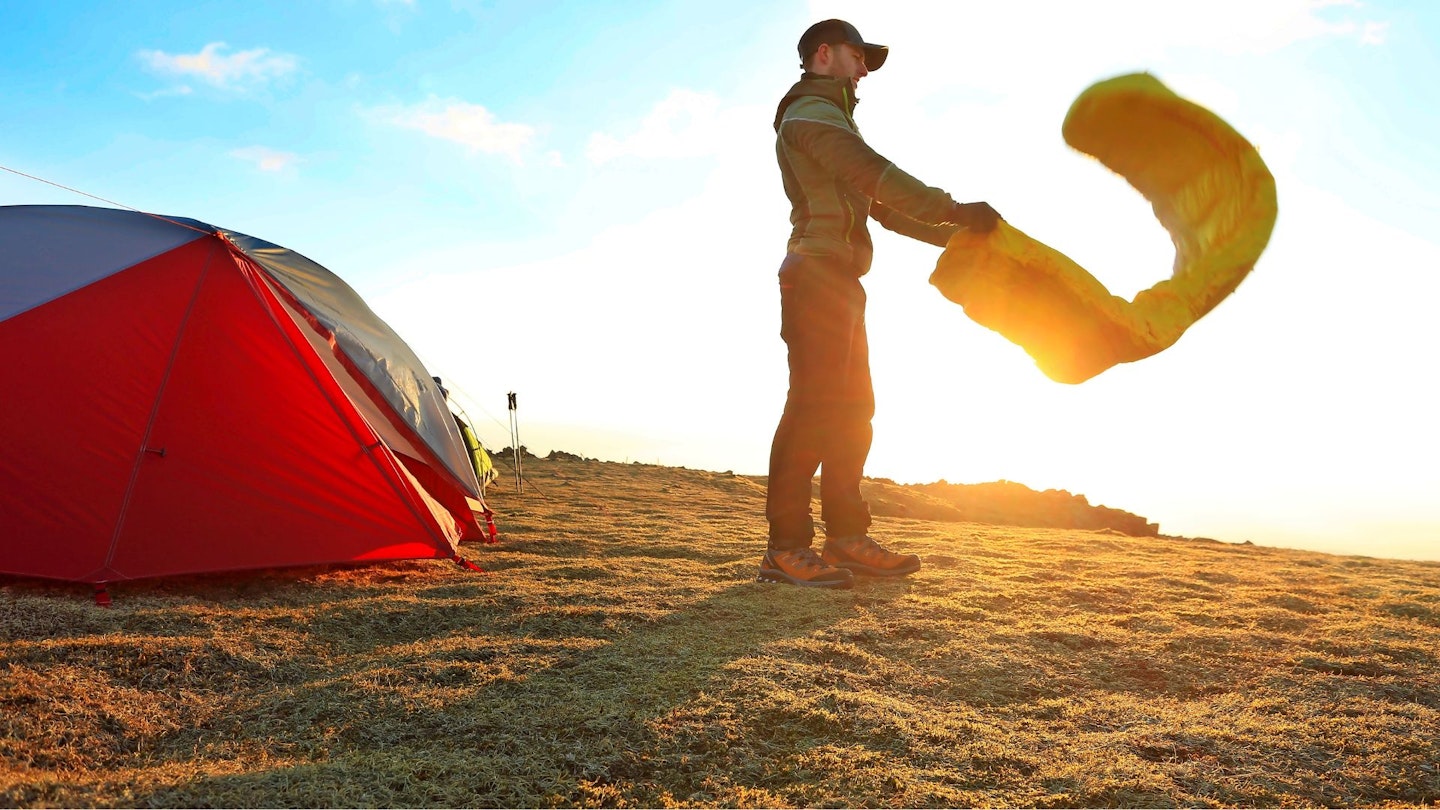
Exped Ultra 0° – Best in Test
deuter Orbit 0° – Best Value
Sea To Summit Ascent AcI -4° – Best for mountain treks
Alpkit Pipedream 200 – Best lightweight summer sleeping bag
Jack Wolfskin Athmos Down +5 – Best for easy access
Marmot NanoWave 35° – Best synthetic summer sleeping bag
Below, we go into detail of the best summer sleeping bags, explaining why they’ve made our shortlist. Beyond the reviews, you can also find some summer sleeping bag buying and care advice.
The best summer sleeping bags in detail:
 LFTO
LFTOwww.alpinetrek.co.uk
This is a fantastic lightweight sleeping bag that is also quite deceptive. Deceptive because it has a good temperature rating for such a low weight.
This is courtesy of very high quality down insulation. It’s 850-fill goose down, which means this 600g sleeping bag (long size) has a temperature rating suitable down to about 2°C.
Sleeping bags often come in two sizes: regular and long. The Exped Ultra 0° comes in five sizes: small, medium, wide medium, large, and wide large.
The Exped Ultra 0° is also a sustainable summer sleeping bag. Having responsibly sourced down is expected of all down sleeping bags, but the Exped Ultra 0° goes further. The Pertex Quantum outer material is recycled, as is the zip. It is a bluesign-approved product and PFC-free; Exped has even offset the manufacturing and shipping emissions.
Though it has the potential to be very long lasting, care does need to be taken because the 10D Pertex fabric isn’t especially tough.
Read our full Exped Ultra 0 review
Pros
- Sustainable
- Super lightweight and compact
- Five sizes available
- Impressive warmth-to-weight ratio
Cons
- No hydrophobic down treatment
| Sizes | Small (170cm), Medium (180cm), Long (195cm), Medium Wide, Long Wide |
| Packed size | 20 x 15cm (Small), 25 x 15cm (Med), 30 x 17cm (Long and MW), 32 x 17cm (LW) |
| Weight | 510g (Small), 530g (Med), 590g (Long), 660g (MW), 690g (LW) |
| Fill | RDS-certified 850-fill down |
| Materials | Recycled, bluesign-approved 10D nylon Pertex Quantum shell w/ PFC-free DWR, 15D nylon lining |
| Temperature rating | Comfort 7°C | Limit 2°C |
Best Value
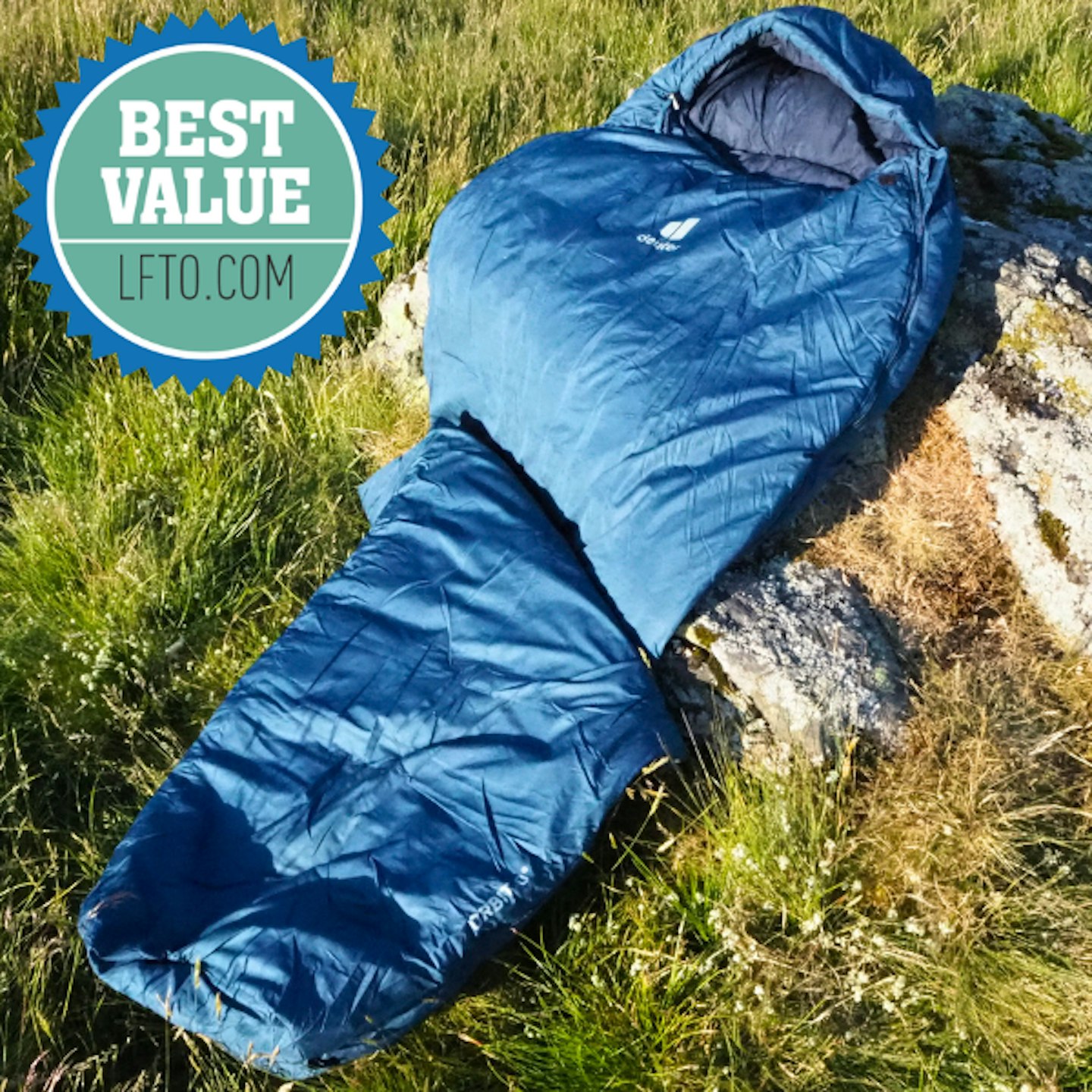 LFTO
LFTOwww.alpinetrek.co.uk
When you see the word ‘value’ you also expect ‘compromise’ to accompany it. It’s not really so in this case.
Not only is the Orbit 0° a very well-made sleeping bag for the price, but it’s simply a very well-made sleeping bag, period. The 50D recycled polyester shell and 75D microfibre lining fabrics are tough, but much softer and more snug than the typical shiny nylon we’re used to.
Its Hollowfibre synthetic insulation is naturally very effective at insulating in damp conditions and is excellent value against down-filled sleeping bags. Helping to keep you warm is a draft collar and an efficient mummy shape. You can also connect the Orbit 0° to another sleeping bag.
There are two lengths available, plus a women’s version (suitable for up to 175cm height). We like how the Orbit 0° is PFC-free with recycled shell fabric, and that deuter is a Fair Wear Foundation member with ‘Leader’ status.
This is quite a bulky sleeping bag, though. Too bulky for hiking.
Pros
- Durable
- Soft, snug material
- Sustainable
- Zip coupling
Cons
- Too bulky for hiking
| Sizes | Regular (185cm), Long (200cm), SL/women's (175cm) |
| Packed size | 45 x 23cm (Reg and SL), 46 x 24cm (Long) |
| Weight | 1400g (Reg and SL), 1450g (Long) |
| Fill | Synthetic High-Loft Hollowfibre |
| Materials | Recycled 50D polyester shell, 75D microfibre polyester lining |
| Temperature rating | Comfort 5°C, Limit 0°C |
Best for mountain treks
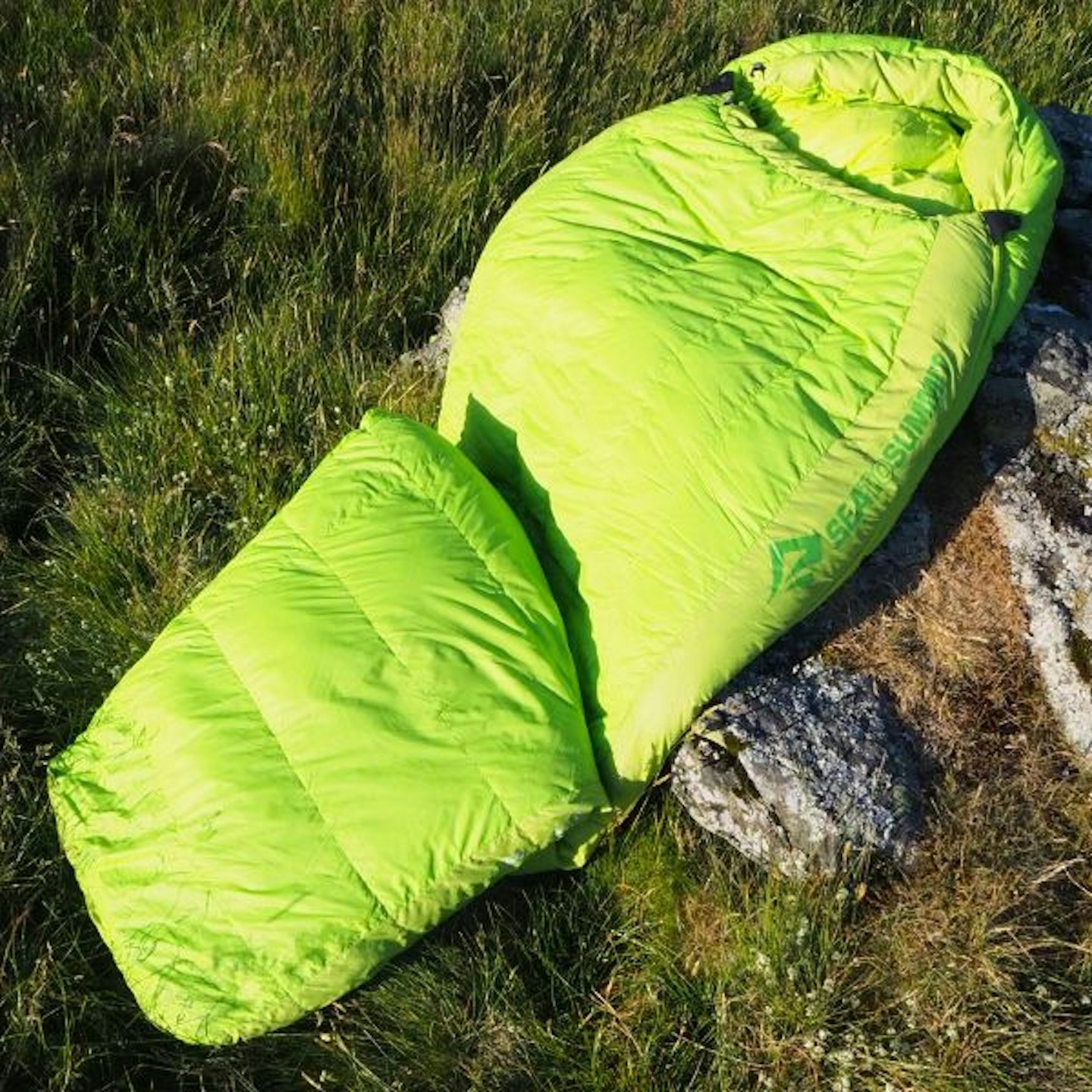
www.alpinetrek.co.uk
With a temperature range that ventures into the low negatives, this sub-1kg sleeping bag is feature-rich and great for summer mountain treks.
Perhaps the most noticeable feature on the Ascent AcI -4° is its triple zips. This setup is all about adaptability. The right-side half zip offers extra ventilation and, with the left zip, lets you fold the top third away. There is a zip at your feet for even more ventilation, and the left-side zip can open the entire sleeping bag up to make a quilt. The Ascent AcI -4° is also compatible for zip coupling.
It sounds fiddly but is in fact extraordinarily useful for spring, summer, and autumn use when the temperature can fluctuate quite a lot. The 750-fill down has a hydrophobic Ultra-Dry finish to fight insulation loss through moisture, and there are large draft tubes to insulate along the zips.
In terms of sustainability, the Ascent AcI -4° has RDS-certified down and is PFC-free. It comes with one of Sea To Summit’s water-resistant Ultra-Sil Compression Sacks, which are bluesign-approved and PFC-free.
Pros
- Bursting with features
- Warmest sleeping bag on test
- Can double as a quilt
- Zip coupling
Cons
- Overkill for irregular users
| Sizes | Regular (183cm), Long (198cm) |
| Packed size | 18cm x 18.5 (Reg), 24 x 18.5cm (Long) |
| Weight | 860g (Reg), 930g (Long) |
| Fill | RDS-certified, PFC-free ULTRA-DRY hydrophobic 750-fill down |
| Materials | 20D nylon |
| Temperature rating | Comfort 2°C, Limit -4°C |
Best lightweight summer sleeping bag
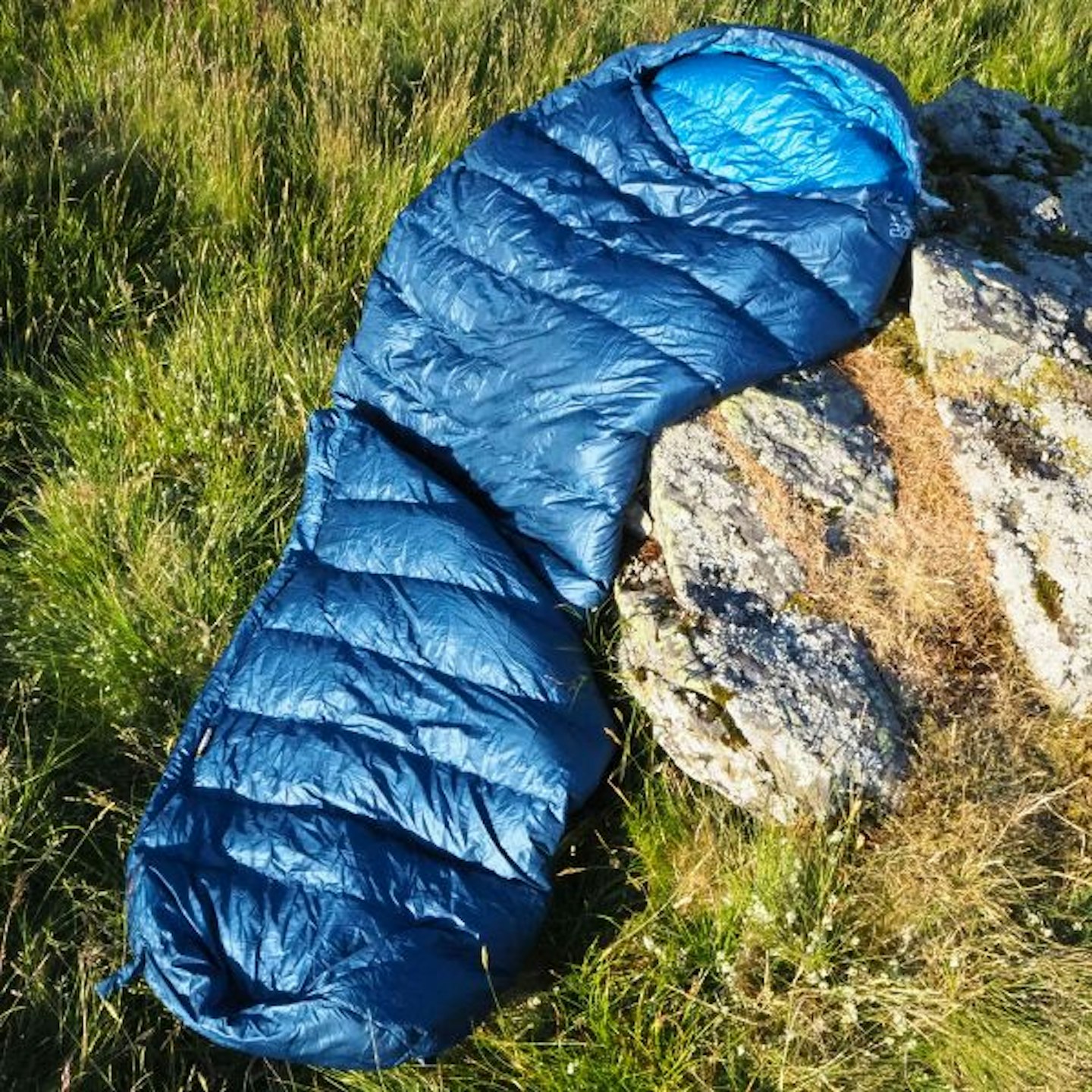
alpkit.com
Alpkit’s Pipedream 200 is a fairly basic but incredibly lightweight and compact two-season sleeping bag. It weighs less than 600g and thanks to a double drawcord on the stuff sack, packs down to an incredible 15.5 x 20cm.
The outer fabric is a 20D nylon, and the insulation is 750-fill down. Both have a PFC-free water-repellent treatment.
Alpkit's no-nonsense approach has its pluses and minuses. One big plus is that the Pipedream is great value for a down summer sleeping bag. It’s also incredibly compact. However, it’s certainly limited to late spring, summer, and early autumn. There is the Pipedream 400 for those wanting a version of this sleeping bag that's just a bit warmer.
In addition to the responsible down and PFC-free construction, Alpkit is a certified B Corp.
Pros
- Superb for lightweight trips and bikepacking
- Sustainable
- Good value for a down sleeping bag
Cons
- Not ideal for those sensitive to cold
| Sizes | Regular (185cm), Long (200cm) |
| Packed size | 15.5 x 20cm (Reg), 15.5 x 22cm (Long) |
| Weight | 545g (Reg), 575g (Long) |
| Fill | RDS-certified, PFC-free DownTek hydrophobic 750-fill down |
| Materials | 20D polyester with PFC-free DWR |
| Temperature rating | Comfort 11°C, Limit 7.4°C |
Best for easy access
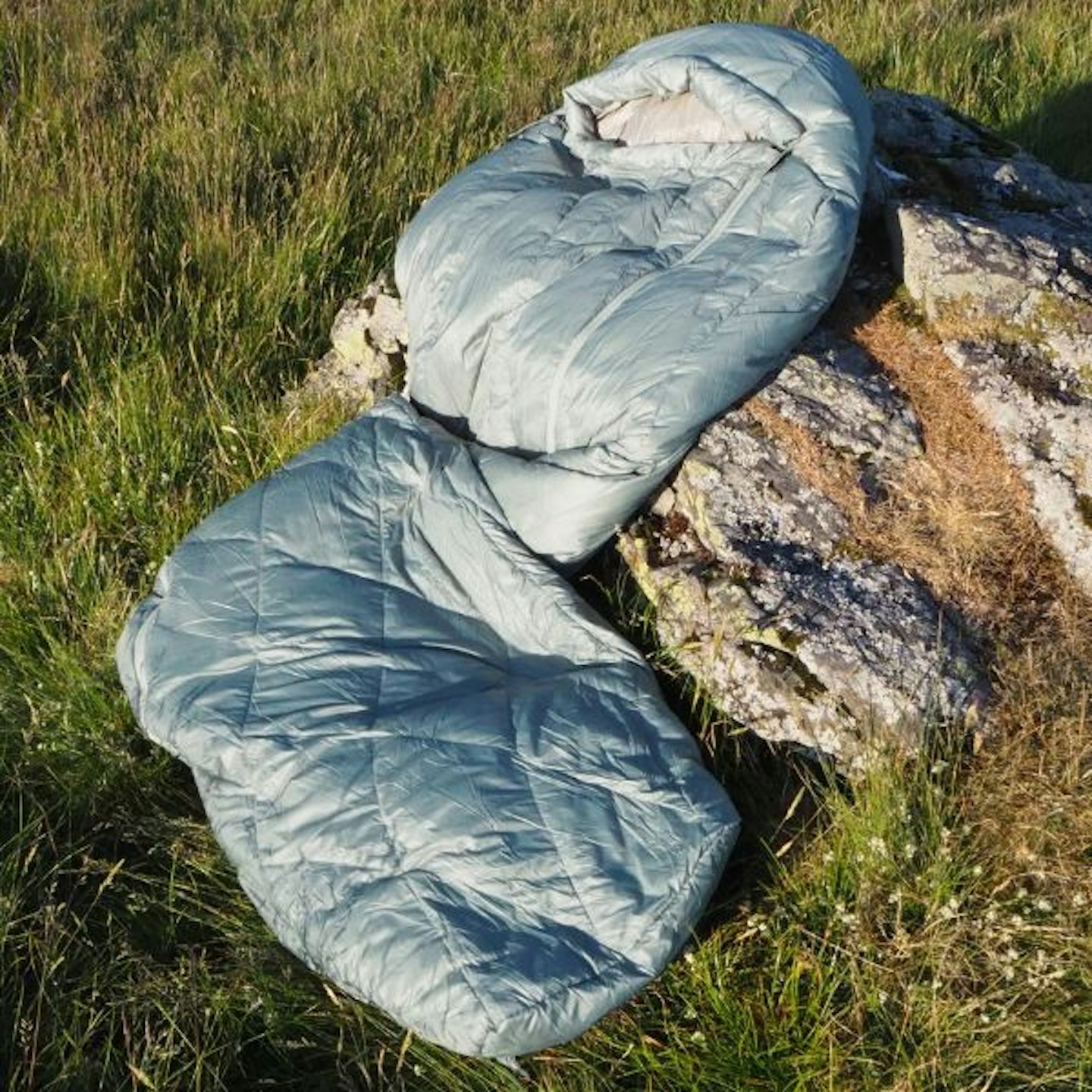
www.jack-wolfskin.co.uk
Jack Wolfskin’s Athmos Down +5, with its unique zip design, is a very good mid-range option in terms of performance and price.
Its temperature range extends down to 5°C; it weighs 650-750g depending on size; and has a packed size of 29 x 22 cm. In a game of Top Trumps: Summer Sleeping Bag Edition, it’s neither a loser nor a champion.
There are, however, some features about this sleeping bag we really like. Its S-shaped zip makes access super easy. And while the body of the sleeping bag uses 700-fill down, the hood uses synthetic PrimaLoft insulation, which performs better in damp conditions. The compression sack is water-resistant and similar to the one you get with the Sea To Summit Ascent AcI -4°.
This sleeping bag scores high for sustainability too. It’s bluesign-approved, PFC-free, plus the PrimaLoft insulation and main fabric are recycled. Jack Wolfskin is also a Fair Wear Foundation member with ‘Leader’ status.
Pros
- Sustainable
- Water-resistant stuff sack
- PrimaLoft insulation around the hood
- Easy-access S zip
Cons
- Exped Ultra 0° is lighter, warmer, and more compact
| Sizes | Regular (180cm), Long (195cm) |
| Packed size | 29 x 22cm |
| Weight | 650g (Reg), 750g (Long) |
| Fill | RDS-certified 700-fill down, recycled bluesign-approved PrimaLoft Black Rise |
| Materials | Recycled, PFC-free 20D nylon Dreamtouch Crossrip |
| Temperature rating | Comfort 9°C, Limit 5°C |
Best synthetic summer sleeping bag
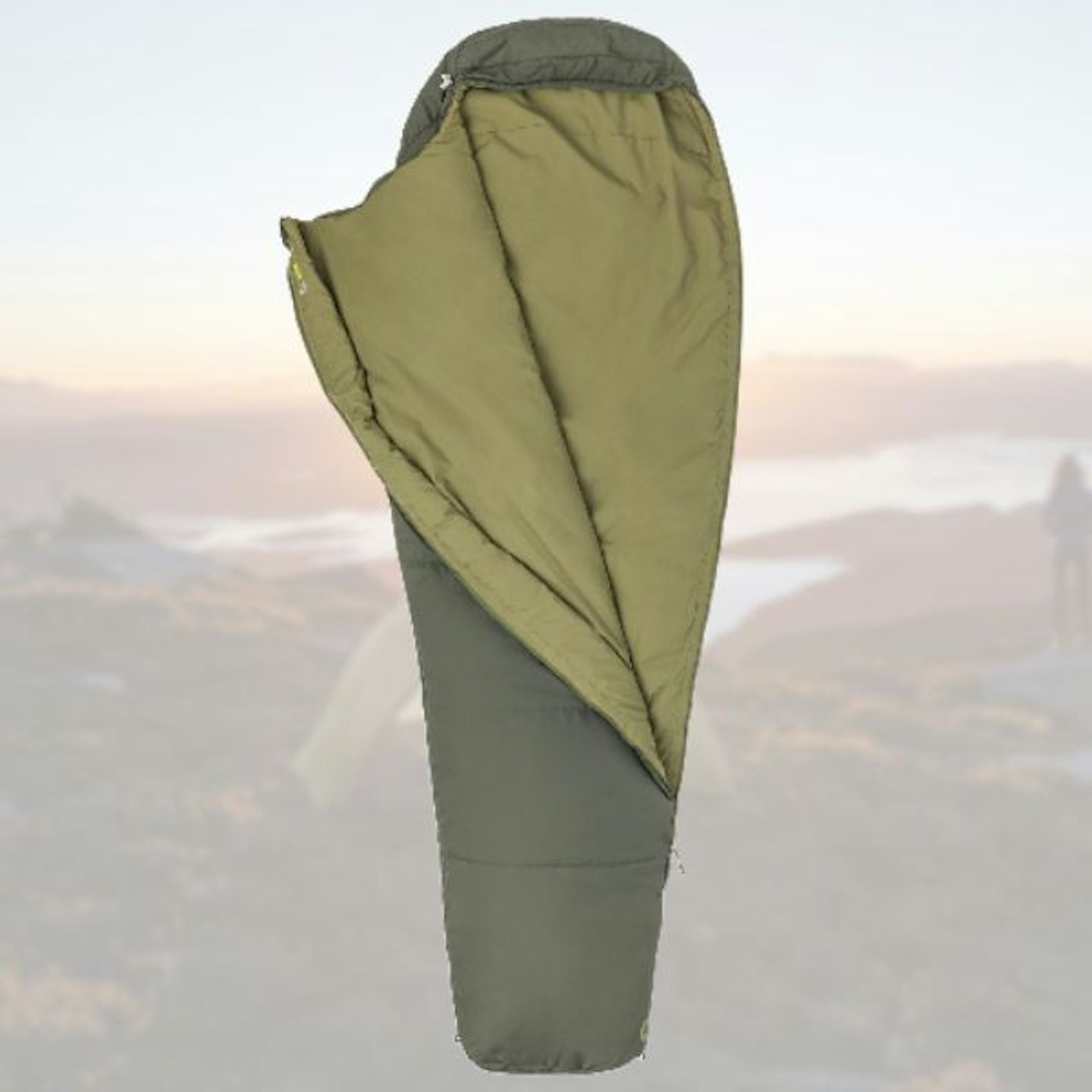
This simple, affordable, and effective two-season sleeping bag ticks the important boxes for most users. The NanoWave 35 is a lightweight synthetic insulated sleeping bag, giving you peace of mind that it’ll still work when it’s damp. The construction also means it's suitable for campsite camping and hiking alike.
The two-way zip is full-length, which makes for easy access and improved ventilation, but has a draft tube to aid warmth, as does the tapered mummy shape. We also like how the polyester lining is quite snug and soft.
Although the NanoWave 35 doesn’t have too much to shout about regarding sustainability, it is bluesign-approved and PFC-free. It’s the best value you’ll get from a high quality sleeping bag. You could go much cheaper if you wanted to, but you would see a noticeable difference in quality.
Pros
- Compact for a synthetic sleeping bag
- PFC-free
- Much higher quality than super budget sleeping bags
Cons
- You can go even cheaper if you really want to
| Sizes | Regular (183cm), Long (198cm) |
| Packed size | 31 x 22cm |
| Weight | 1050g |
| Fill | Synthetic SpiraFil |
| Materials | PFC-free, bluesign-approved polyester |
| Temperature rating | Comfort 7.8°C, Limit 3.3°C |
What to look for in a summer sleeping bag
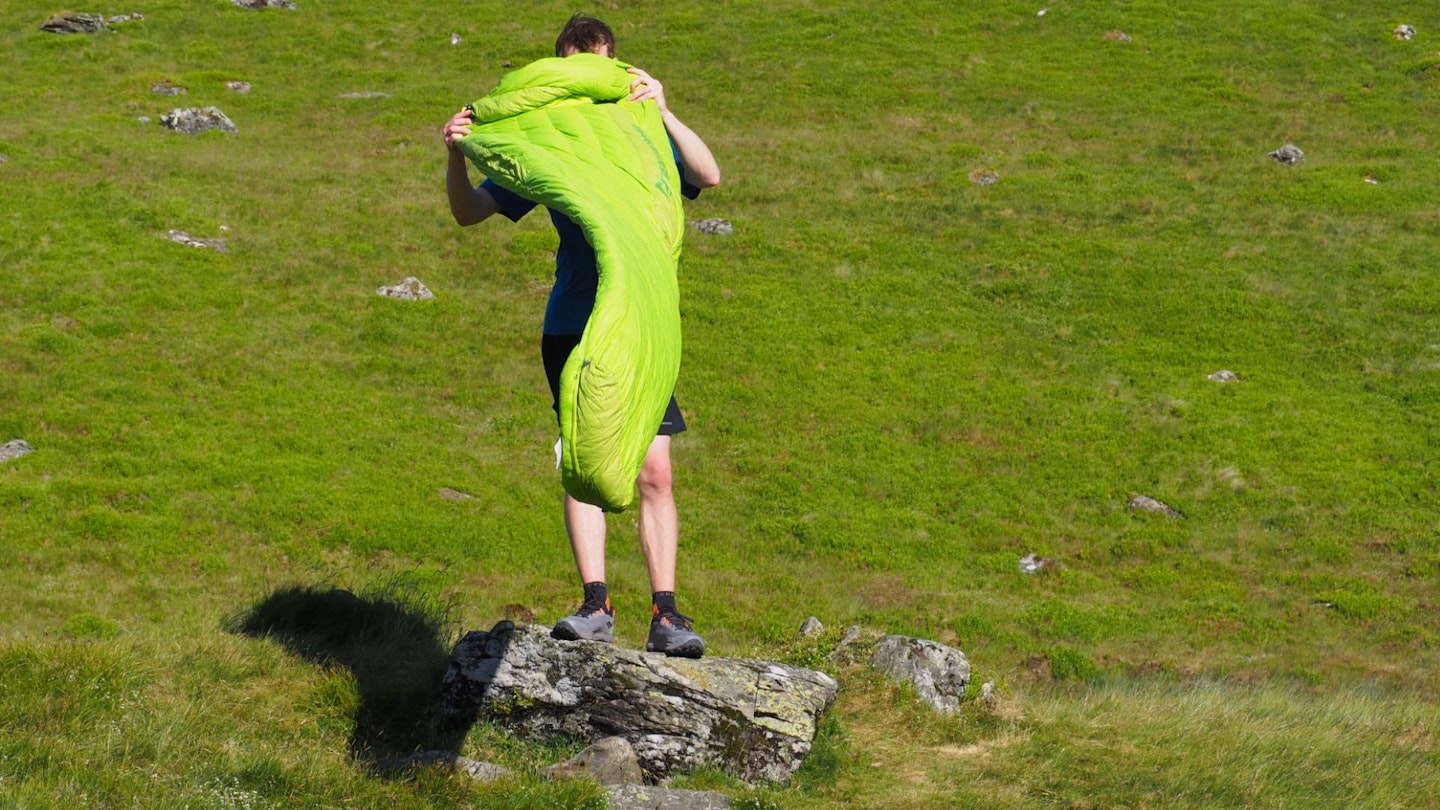
Insulation: Down or synthetic – down is lighter and warmer, synthetic is cheaper and more hydrophobic. High-performance and super lightweight sleeping bags generally use down insulation often treated with a hydrophobic finish. Family camping sleeping bags are usually synthetic-filled. But synthetic insulation is continually improving and some synthetic-insulated sleeping bags are suitable for hiking and trekking.
Shape: Sleeping bags are generally a rectangular or mummy shape, with some having an in between tapered cut. Mummy-shaped sleeping bags save weight and are the most efficient for insulating. But they can feel restrictive. Rectangular sleeping bags address the issue of claustrophobia but are more bulky and less efficient.
Size: Sleeping bags usually come in Long and Regular sizes. But some brands offer more choice, with women’s specific and wider options.
Fabric: This will be nylon or polyester. Nylon is lighter and stronger and used on higher end sleeping bags. Polyester is cheaper but can be softer and feel more comfortable. Sleeping bag outer fabrics are sometimes finished with a water-repellent coating to help fight against damp.
Weight and packed size: The very lightest summer sleeping bags can pack down to very little indeed. These are ideal for those embarking on lightweight treks. For family camping trips, this isn’t such a priority. But, if you’re after a multi-purpose sleeping bag to bring on the trail, weight and size are high priority.
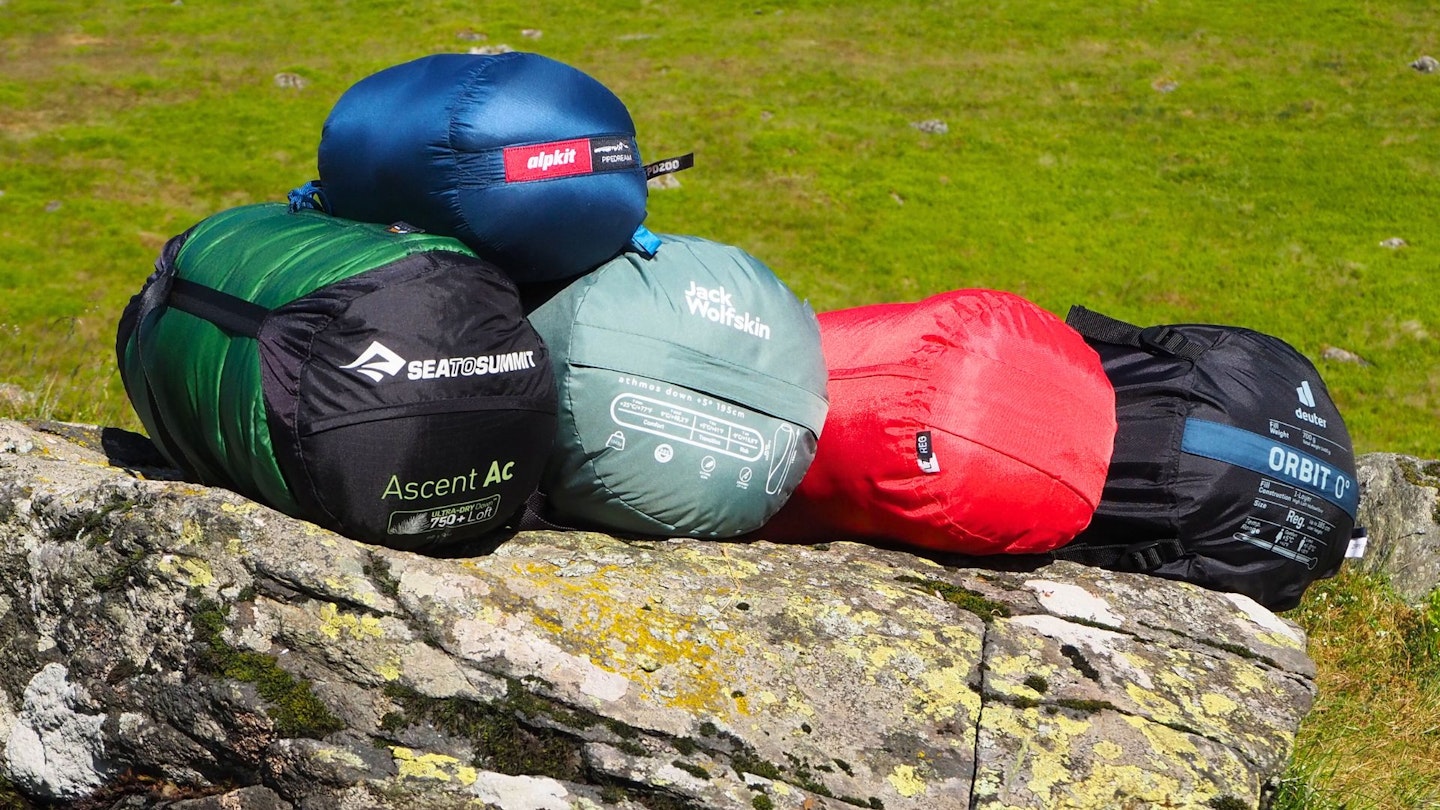
Temperature ratings: Comfort and Limit temperature ratings are a guide, indicating the suitable temperature range for women and men respectively. But it’s more important to know yourself. If you feel the cold, get something warmer. It’s a rule of thumb to opt for something a bit warmer than you need anyhow.
Zips: Zip length impacts access, weight, and insulating ability. Full-length zips make for easy access and good ventilation but add weight and compromise insulating efficiency a bit. Shorter zips save weight and improve insulating efficiency. Some sleeping bags also allow for zip coupling with other sleeping bags.
Hood: Adjustable hoods are good for versatility. They mean you can make the hood more close-fitting if there is a cold snap.
Sleeping bag care and maintenance
Down sleeping bags need to be stored in their bigger storage sacks when not in use to allow the down to loft. They also need to be cleaned with dedicated down wash, instead of regular detergent.
Synthetic sleeping bags don’t need a separate storage bag but should also be cleaned with a dedicated outdoor gear cleaner in order to keep the fabrics breathable and maintain water repellency if it has it.
Best down wash
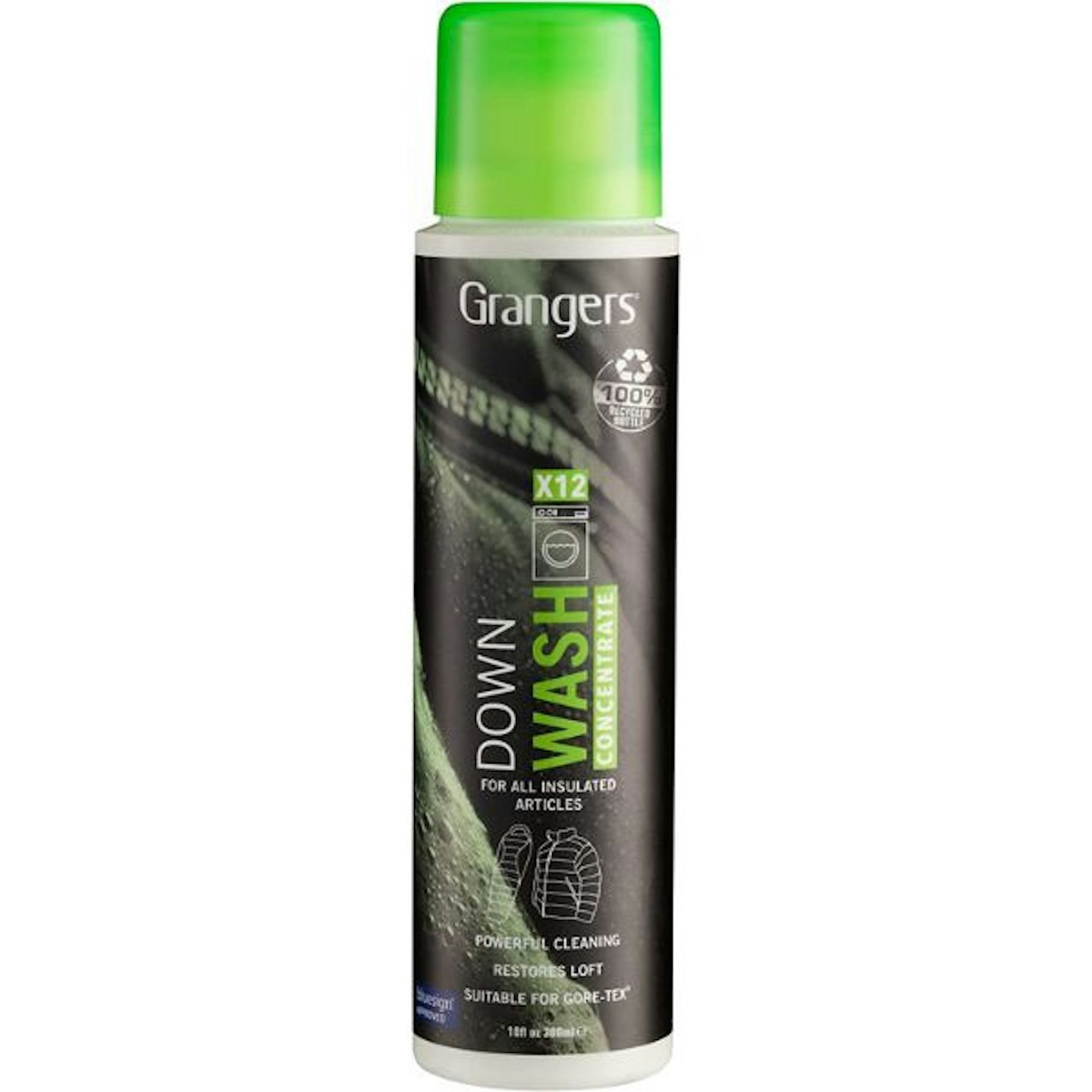
Bluesign-approved, PFC-free, and water-based, this is a sustainable and effective wash for down and synthetic-insulated gear and clothing. Nikwax Down Wash Direct is also a good option.
Pros
- Sustainable
- Effective
- Concentrated formula
Cons
- None
About the author
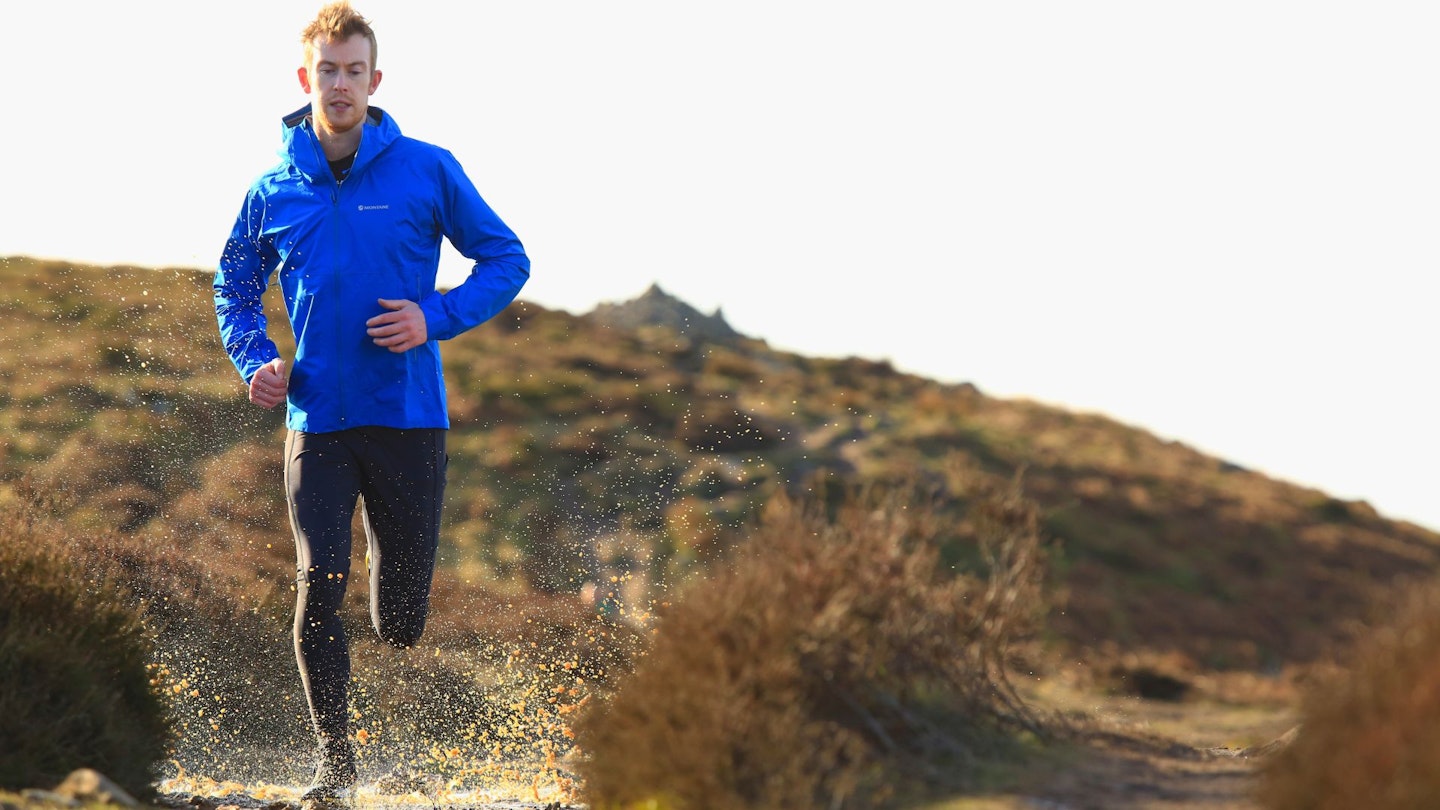
Chris Williams, our senior staff writer, compiled this piece using wider recommendations from the Trail and LFTO team. Chris is an outdoor journalist originally from New Zealand, but he now lives in Yorkshire and loves charging about the dales, testing all sorts of gear to bring you only the best of the best when it comes to reviews and recommendations.

